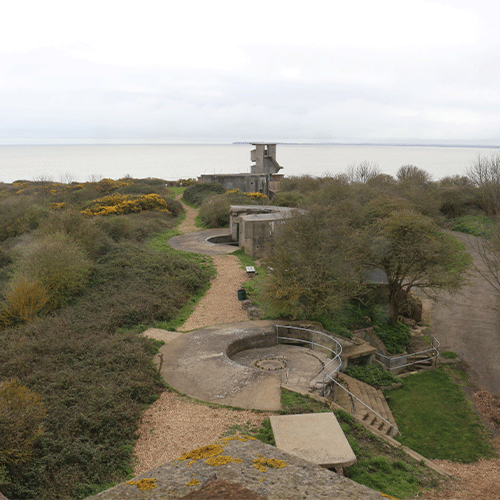
Built in 1890 as a defence against a potential invasion by France, Beacon Hill Fort is a rare survivor.
The original battery was armed with four guns, each with a range of around 4.5 miles. Two 4.7 inch Quick Firing (QF) guns, joined by a 6 inch gun and a 10 inch gun. The latter two were mounted on hydropneumatic ‘disappearing’ carriages. These carriages allowed the weapon to be loaded safely behind a concrete emplacement. They would then be lifted by hydropneumatic rams into the firing position and fired. The resulting recoil would reset the weapon into the loading position.
In 1901, a new gun was added against the increased threat from the German Imperial Navy which was gathering strength at that time. A 6 inch QF breech loader was installed in a new concrete gun emplacement, complete with underground magazine and crew shelter. This gun emplacement was later modified c1941 when a 6 inch MkVII breech loader was installed.
By 1904, the two hydropneumatic weapons had been replaced with two 6 inch QF breech loaders ‘en barbette’, meaning they fired over the parapet, not through an embrasure. These were more powerful weapons with a range of up to 7 miles. These two guns remained in place until the battery was stood down in 1956, following the cessation of coastal defence in the UK.
The last installation is known as Cornwallis Battery. This was added c1941 to house a twin 6 pounder, a weapon with a rapid rate of fire to protect against fast moving attack boats and torpedo boats.
The fort also contains underground magazines, underground engine room, a WWII battery observation post and a WWII Spigot Mortar position.
Beacon Hill Fort is only 100 meters south of this tower and is well worth a visit if you’re visiting.
Back Continue